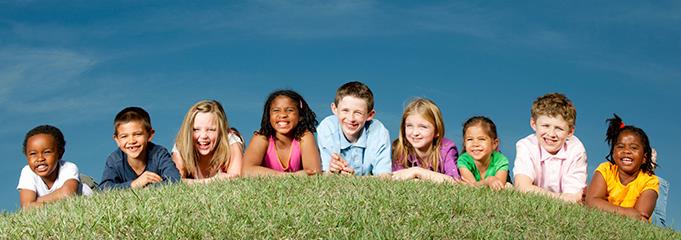
Why being trauma informed matters beyond trauma
This article was authored by Dr Melissa Raine
Associate Investigator, ARC Centre for Excellence for the History of Emotions
I came to the Australian Childhood Foundation’s Second Biennial Childhood Trauma Conference as something of an outsider; both as a parent, and as a humanities researcher who is interested personally and professionally in child development, ideas of selfhood, and the role of language in our lives, especially its role in making us the people that we are. You might wonder why I would find myself at an event that emphasises the crucial importance of preverbal, non-linguistic communication and meaning making? An event that teaches us that restoring the capacity for affirming, reciprocal relationships to a traumatised child necessitates avoiding, or at least playing down communication through language?
 The paradigm for understanding human selves that was presented at the conference stands in stark contrast to the older concept of a self divided into a mind, where meaning is made, and a body, which does not bear or produce meaning. In such a version of self, language is the most important, meaningful tool we have for communicating who we are and what we need. It is a model that privileges cognition over other modes of perception and experience. No doubt this is old hat for trauma researchers and practitioners, but in the broader Australian community, I believe that this unspoken assumption continues to predominate.
The paradigm for understanding human selves that was presented at the conference stands in stark contrast to the older concept of a self divided into a mind, where meaning is made, and a body, which does not bear or produce meaning. In such a version of self, language is the most important, meaningful tool we have for communicating who we are and what we need. It is a model that privileges cognition over other modes of perception and experience. No doubt this is old hat for trauma researchers and practitioners, but in the broader Australian community, I believe that this unspoken assumption continues to predominate.
Why does this matter for children who have not faced severe abuse or neglect? Our collective cultural belief that children’s behaviour is effectively guided through verbal instruction, encouragement and admonition is at best falling short of meeting children’s developmental needs, and at worst unwittingly inflicting varying degrees of anxiety-provoking stress on them. In the broader community, we tend, too often, to tell children what to do, to demand that they account for their thoughts, acts and feelings in words, and to find them wanting if they don’t manage these things, perhaps even assuming that they are deliberately non-compliant. Language is thus associated not only with a developmentally inappropriate reliance on cognitive skills; ethically, it becomes aligned with a highly questionable adult assertion of power and constraint over a child.
And yet, to communicate about ourselves in language is a valuable skill that is rightly cherished within our culture. We want children to be able to speak of their own experiences with their own voices; we understand that this is empowering in some sense. But what do we really know about how this capability develops?
Some of the clues were provided at the conference. Stephen Porges’ work alerts us to the profound effect of the human voice on the nervous system; Russell Meares provides a thought-provoking reformulation of language integrated into an embodied self. Many speakers referred to Colwyn Trevarthen, whose recent work with Jonathan Delafield-Butt tracks the complexity of embodied communication in infants, as well as its disruption in autism. But every talk pointed in some sense towards the significance of strong non-verbal foundations in relationships and communication for healthy, happy lives.
Article 12 of the UN Convention of the Rights of the Child states that “children have the right to say what they think should happen and have their opinions taken into account.” It’s a laudable aim, but how do children get to that point, and how can we assist them? These questions are central to the forthcoming symposium “Children’s Voices in Contemporary Australia” which will take place at The Dax Centre, University of Melbourne on September 9th 2016. We hope that the insights into children’s needs provided by the ACF’s trauma conference will participate in a broader dialogue not only about how children can “speak for themselves”, but how well-equipped contemporary Australian society is to listen.
